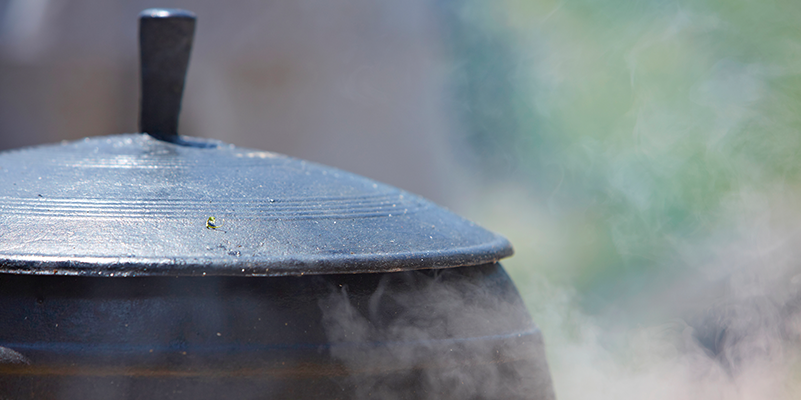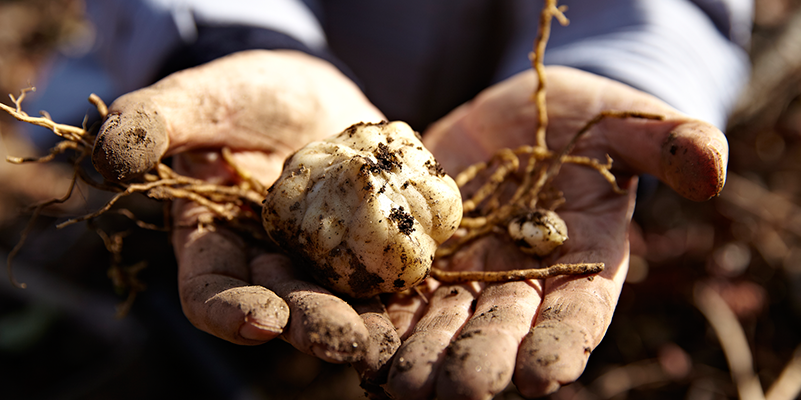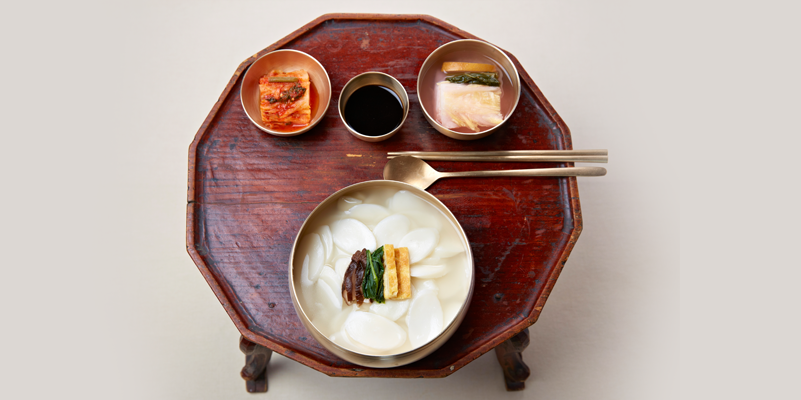Korean Temple Food
History
- Life of Mendicancy
- Dissemination of Buddhism and geographical expansion
- Buddhism and Sanctity of labor
- Korea’s temple food

Life of Mendicancy
The sutras describe in detail how Buddha and his disciples
received alms for their daily subsistence.
The practitioners devoted their life entirely to spiritual attainment
instead of partaking in food production and therefore
replied on people’s donations to survive.
Once a day, the practitioners would visit nearby villages.
Sometimes they formed a single file; other times,
they went separate ways to ask for food.
There were days when no gift of food was forthcoming.
Then, they simply had to starve.
If a monk was too sick to go out and collect alms, fellow monks would share food with him.
Everyone equally shared the daily collection of donated food which had to be consumed at once.
Eating past noon time was not permitted.
Monks were required to live a life of extreme poverty, with only the minimum of clothing, a begging bowl and a small amount of medicine.
As practitioners of this period depended solely on mendicancy for food, there was no need for a separate cuisine for monastics.
Still, we can catch some glimpse of future temple food-to-be in the food of Buddhist monastics of this period.
First, it was the food the locals ate every day.
The lack of advanced transportation and food storage technology means that the food was prepared using predominantly fresh local produce available in the given season.
Second, since people wanted to earn merits and improve their karma by offering alms to monastics, food for monks must have been prepared and cooked with great care.
Following Buddha’s precept of no killing, vegetables and grains must have been main ingredients, while too pungent spices would have been avoided.

Dissemination of Buddhism and geographical expansion
As the religious orders following the Buddha’s teaching expanded,
the boundaryof the spiritual community needed to be
more clearly defined. At the end, any sincere practitioner of Buddhism
who stayed and participated in the temple’s ceremonies came to
be recognized as a member of the community.
All the visitors to the temple were provided with minimal
but necessary food, clothes, medicine and boarding.
This tradition of universal brotherhood served as an essential foundation for Buddhism to become a religion beyond any particular region or a period of time.
This spirit of equality and hospitality, by which all Buddhists were accepted as a family, facilitated a lively exchange and propagation. It was against this backdrop that Xuanzan went to study in Nalanda University in India and brought with him numerous invaluable Buddhist texts to China, and that Hyecho seunim from Silla travelled many kingdoms in India and wrote his famous book the Records of Travel to Five States of India.
As Buddhism spread to many different regions with distinctive geographical and climate characteristics, food for Buddhist practitioners started to adapt to local conditions.
For prosperous agricultural regions, a greater variety of ingredients were available.
On the other hands, food supply could be severely limited in desert and mountain areas.
Sometimes, it means bare minimum for survival. However, propagation of Buddhism continued throughout the world overcoming all these challenges.
As temples grew in size and number, sourcing of food for monastics became more structured.
Some temples continued to follow the practice of alms collection, but many began to depend on the donation by local sponsors and laity.
The tradition of temple food was finally born as the monks were allowed to purchase ingredients not banned by the precept and prepare their own meals.

Buddhism and Sanctity of labor
Produce grown by monks, food prepared by monks
Construction of Buddhist temples was undertaken as a national project and enormous land grants from the government and sumptuous gifts from the nobles eliminated any need for alms collection.
However, the Chan schools of Buddhism, which emerged in the later period, refused to follow such trend.
The leader behind this movement was Baizhang Huaihai (720 ~ 814).
He was one of Dharma disciples of Mazu Daoyi and he established the pure monastic codes (or the holy rules of Baizhang) in which communal work was required and the system of supporting the monastery through working in the fields was established.
The so called “Pure Rules” still remain the most distinctive characteristic of northern Buddhism (or Mahayana).
Monastic communal work was called wulryeok and members of the temple community must attend the daily services, practice Buddha-dharma and participate in wulryeok.
Baizhang Huaihai faithfully adhered to the principle he himself had established even in his 90s.
Every day, he went out to the field and worked with his plow and a hoe.
His students were worried about the health of their elderly teacher and they decided to hide the teacher’s farming tools.
When Baizhang Huaihai noticed that his tools were gone, he realized what happened and quietly returned to his room.
His students rejoiced thinking their old teacher finally made concession to their concerns.
However, Baizhang Huaihai did not attend the meal service.
Because he did not fulfill his daily work, he refused to eat for the day.
The students begged for his forgiveness and returned the old teacher’s tools.
Even during the times when Buddhism was oppressed, Seon Buddhism continued to receive supports as the monk’s humble life style and strong work ethics inspired respect and trust in lay people.
Seon temples eventually developed a unique temple food which uses vegetables and crops which monks cultivate and harvest on their own.

Korea’s temple food
From the tables of royal palaces to the general public
According to The Chronicles of the Three Kingdoms, King Beopheung of Silla proclaimed a law in 529 A.D to prohibit slaughtering of animals.
The Memorabilia of the Three Kingdoms also states that in 599 A.D. King Beop, the 29h King of Baekjae, also ordered all households to release birds and hawks in captivity, burn all fishing tools and stop slaughtering of animals.
The royal court and ruling class of the Three Kingdoms adopted and encouraged vegetarian life style and as a result, Buddhism started to deeply influence Korea’s food culture. Scholars conjecture that the Buddhist cuisine would have flourished during the Goryeo dynasty but unfortunately no record remains to support this speculation.
Chinese Chan Buddhism, along with its strong work ethics, was introduced to Korea in the 9th and 10th centuries. The term Chan was transliterated as Seon, and Seon Buddhism was initially welcomed by the powerful families in rural areas and Seon monasteries settled deep in the mountains. While resources were scarce and external donations were hard to come by, Seon Buddhism’s independent way to farm their
own supply of food was essential for survival. In the process, physical labor became more than just one rule in monastic codes and grew to embody the core value of Seon Buddhism.
Korean temple food evolved around the agricultural products that best suit the local climate and monks themselves could grow. The Confucian Joseon dynasty suppressed Buddhism, but it still found its way into ordinary citizen’s food culture.



